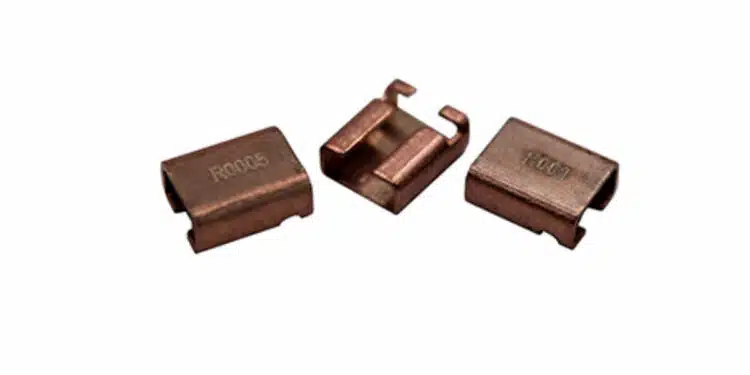TT Electronics, a global provider of engineered electronics for performance critical applications, announced the launch of their newest resistor – LRMAP1216.
The new SMT shunt resistors offer accurate current sensing up to 100 amps for automotive and industrial applications.
The metal alloy SMT shunt is the latest addition to TT’s growing portfolio of current sense shunt resistors with AEC-Q200 approval. It helps customers to achieve accurate and surge-proof current measurement in PCB assemblies, supporting the development of products which feature reliable control of energy consumption.
LRMAP1216 SMT shunt resistors, a compact complement to the existing LRMAP2726. Rated at up to 5W, the product is ideal for measuring the high currents found in motor control, power supply and battery management applications.
Building on TT’s expertise in current sense resistors engineered to meet demanding accuracy targets, the new product offers values down to 500µΩ at 0.5% tolerance with TCRs down to 50ppm/°C.
The low TCR and low inductance of this design allow accurate current sensing without compensation circuitry. Having 4-terminal connections removes mounting offset; the mounted value equals the unmounted value. With a short-term overload rating up to 25W for 5s and high energy capacity, this robust solution is designed to withstand high inrush or switching surges.
The metal alloy SMT shunt LRMAP1216 is the latest addition to TT’s growing portfolio of current sense resistors with AEC-Q200 approval. It helps our customers to achieve accurate and surge-proof current measurement in PCB assemblies, supporting the development of products which feature reliable control of energy consumption.
Features:
- 4-terminal Kelvin J-lead terminations
- Resistance range 0.5mΩ and 1mΩ
- 3 and 5W rating in compact footprint
- Robust welded construction
- Low inductance
- AEC-Q200 Qualified































